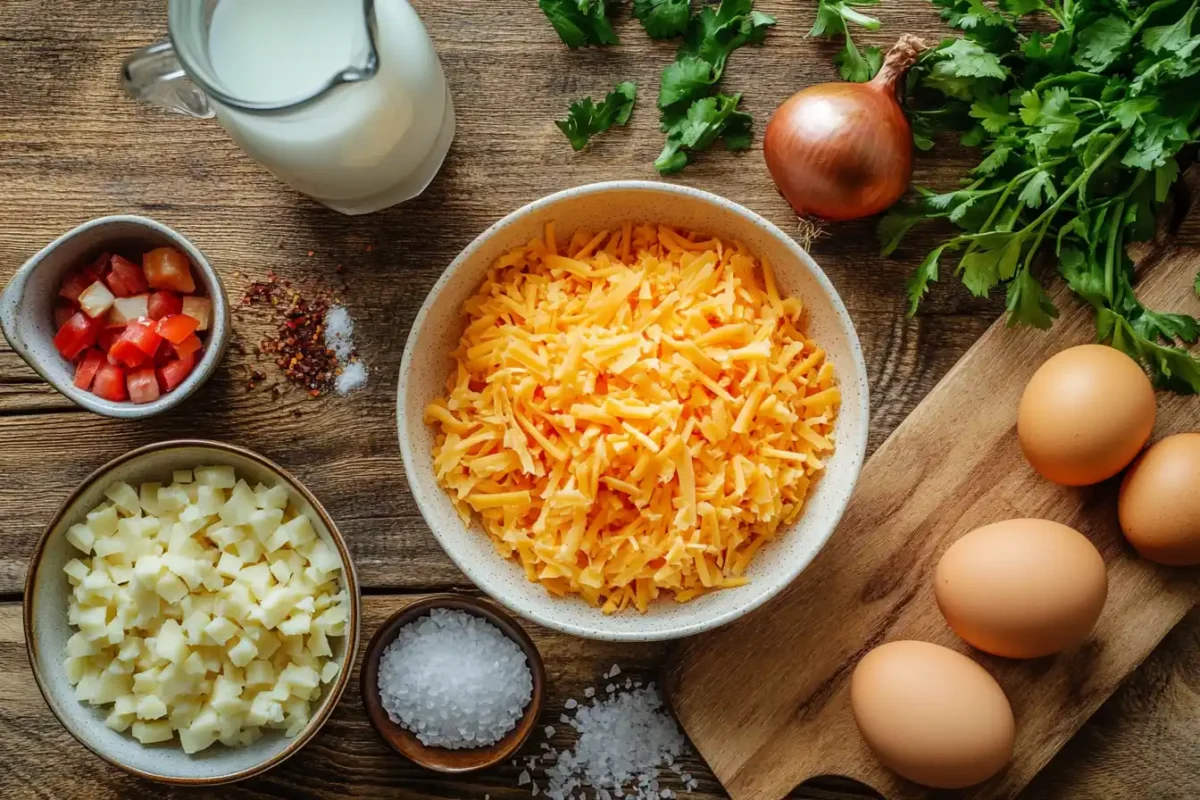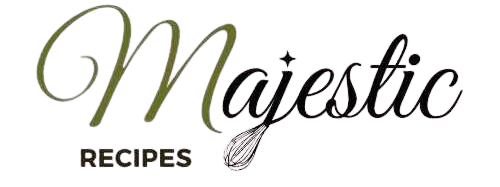Casseroles are a comforting go-to for busy households, and frozen hash browns for casserole recipes are an ingredient that brings both convenience and delicious results. Whether you’re making a cheesy breakfast casserole or a hearty dinner bake, frozen hash browns provide that crispy, flavorful potato element that makes casseroles shine.
But the question arises: should you thaw your frozen hash browns for casserole recipes, or can you add them directly to your dish? The answer depends on the type of recipe, your desired texture, and the time you have to prepare. This article will guide you through everything you need to know about using frozen hash browns for casserole, including the best thawing methods, tips for handling them, and delicious recipe ideas.
Table of Contents
What Are Frozen Hash Browns for Casserole?
Frozen hash browns for casserole are pre-prepared potatoes that are peeled, shredded, diced, or formed into patties, then partially cooked and frozen for convenience. They are a lifesaver for busy cooks, eliminating the need to prep fresh potatoes from scratch.
Types of Frozen Hash Browns: Shredded, Diced, and Patties
- Shredded Hash Browns:
These are finely grated potatoes, typically used in casseroles where a soft texture is desired. They crisp up nicely when baked or fried, providing a satisfying crunch. - Diced Hash Browns:
These are cubed pieces of potatoes. They are perfect for casseroles that require a chunkier texture and can add more bite to each serving. - Hash Brown Patties:
These are pre-formed and partially cooked patties, often used for breakfast sandwiches or quick side dishes. They can also be broken up and added to casseroles.
Why Are Hash Browns Frozen?
Hash browns are frozen for two primary reasons:
- Convenience:
Freezing hash browns allows them to be stored for longer periods without spoiling. This makes them a convenient option for quick meal preparation. - Preservation:
The freezing process locks in the freshness of the potatoes, preventing them from oxidizing and turning brown. It also helps maintain their texture and taste until they are ready to be used.
Why Thawing Matters in Casserole Recipes
The Science Behind Thawing Frozen Ingredients
When frozen foods like hash browns are thawed, the ice crystals that formed during the freezing process melt and release water. This water can impact the cooking process and the final texture of your dish. If hash browns remain frozen when added to a casserole, they will release moisture as they cook, which may affect the dish’s overall consistency.
How Thawing Affects Texture and Cooking Time
- Texture:
Thawed hash browns offer a more consistent texture. When you bake with thawed hash browns, they cook more evenly and achieve a desirable crispy texture. Using frozen hash browns can sometimes result in uneven cooking, where parts of the casserole are mushy while others remain undercooked. - Cooking Time:
Thawing hash browns reduces the overall cooking time. Frozen hash browns require additional time in the oven to fully cook and crisp up. This extra time can sometimes lead to overcooked or dry edges in casseroles.
Benefits of Using Thawed Hash Browns
- Even Cooking: Thawed hash browns ensure the entire casserole cooks uniformly, avoiding undercooked or overly wet sections.
- Better Texture: They produce a crispier, more appealing texture in the final dish.
- Reduced Moisture: Thawed hash browns release less water into the casserole, preventing a soggy or runny outcome.
- Faster Prep Time: Since thawed hash browns cook more quickly, your casserole will be ready sooner.
Pros and Cons of Thawing Hash Browns for Casserole
Advantages of Thawing Frozen Hash Browns
Improved Texture and Even Cooking
When hash browns are thawed before being added to a casserole, they cook more uniformly. The thawing process removes the ice crystals that would otherwise melt during baking and create pockets of moisture. This results in a consistently cooked casserole with better texture throughout — the potatoes become tender on the inside while maintaining a crispy exterior.
Reduced Excess Moisture
Frozen hash browns contain ice crystals that turn into water when heated. If you skip thawing, this water can seep into the casserole, making it soggy or runny. By thawing and draining the hash browns first, you reduce the risk of excess moisture, ensuring a casserole with the ideal consistency.
Faster Baking Time
Using thawed hash browns cuts down on the overall baking time. Since the hash browns are already at room temperature or refrigerator temperature, the oven doesn’t have to work extra hard to thaw and cook them simultaneously. This means your casserole can be ready in less time, which is helpful when you’re preparing meals on a tight schedule.
Easier Seasoning and Mixing
Thawed hash browns are more pliable, making them easier to mix with other ingredients, such as cheese, vegetables, and spices. Seasoning sticks better to thawed hash browns compared to frozen ones, allowing for more even distribution of flavors throughout your dish.
Drawbacks of Thawing Frozen Hash Browns
Extra Prep Time
One of the main disadvantages of thawing hash browns is the additional prep time. Depending on the thawing method you use, it could take anywhere from 30 minutes to a few hours. If you’re in a hurry, this step can be inconvenient.
Potential for Sogginess if Not Handled Properly
If thawed hash browns are not drained or dried properly, they can become soggy. Excess water left in the hash browns can compromise the texture of your casserole. Properly squeezing out the moisture is essential to avoid a mushy dish.
Loss of Convenience
Frozen hash browns are popular because they are convenient and ready to use. Thawing them adds an extra step, which might defeat the purpose of using a pre-prepared ingredient. For those seeking a quick, no-fuss meal, thawing may seem like an unnecessary hassle.
When You Can Skip Thawing Hash Browns
Situations Where Using Frozen Hash Browns Works
There are scenarios where using frozen hash browns without thawing is perfectly acceptable:
- Casseroles with Longer Baking Times:
If your casserole recipe calls for a baking time of 60 minutes or more, frozen hash browns will have enough time to thaw and cook fully in the oven. - Recipes with Higher Heat:
Dishes that are baked at 375°F (190°C) or higher can handle frozen hash browns better, as the high heat helps evaporate excess moisture quickly. - Soupy or Creamy Casseroles:
In recipes that already contain a lot of liquid or sauce, a bit of extra moisture from frozen hash browns may not negatively affect the texture.
Types of Casseroles Best Suited for Frozen Hash Browns
Some casseroles are designed to work well with frozen hash browns:
- Cheesy Breakfast Casserole:
The combination of cheese, eggs, and hash browns can handle a bit of extra moisture without becoming too runny. - Meat and Potato Casserole:
If your casserole includes ground beef, sausage, or ham, the juices from the meat can balance out the moisture from frozen hash browns. - Cream of Soup-Based Casseroles:
When your recipe uses cream of mushroom, chicken, or celery soup, the extra moisture from frozen hash browns blends well with the creamy texture.
Adjustments for Cooking Time and Temperature
If you decide to use frozen hash browns, consider the following adjustments:
- Increase Baking Time:
Add an extra 10-15 minutes to the baking time to ensure the hash browns cook fully and any excess moisture evaporates. - Preheat Your Oven Thoroughly:
Make sure your oven is fully preheated before putting the casserole in. This ensures the dish starts cooking immediately, reducing sogginess. - Cover and Then Uncover:
Bake the casserole covered with foil for the first half of the cooking time to retain moisture. Remove the foil for the remaining time to allow the top to crisp up.
Best Methods for Thawing Frozen Hash Browns
Thawing frozen hash browns properly can make a significant difference in your casserole’s texture. Here are the best methods for safely thawing hash browns.
Refrigerator Thawing
Step-by-Step Guide
- Place the Hash Browns in a Bowl: Transfer the frozen hash browns into a large bowl or a resealable plastic bag.
- Cover or Seal: Cover the bowl with plastic wrap or seal the bag tightly.
- Thaw in the Refrigerator: Allow the hash browns to sit in the refrigerator for 6-8 hours or overnight.
- Drain Excess Water: Once thawed, squeeze out any extra moisture using a clean kitchen towel or paper towels.
Pros and Cons
- Pros: This method ensures a consistent thaw and minimizes the risk of bacterial growth.
- Cons: It takes the longest time, so it requires planning ahead.
Microwave Thawing
How to Thaw Hash Browns in a Microwave
- Place in a Microwave-Safe Dish: Spread the hash browns in a single layer on a microwave-safe plate.
- Defrost Setting: Use the microwave’s defrost setting or set it to 50% power.
- Heat in Intervals: Microwave for 30-second intervals, stirring between each interval to ensure even thawing.
- Drain and Squeeze: Once the hash browns are thawed, use a towel to remove excess moisture.
Precautions and Tips
- Watch Closely: Avoid overheating, which can cause the hash browns to start cooking.
- Quick and Convenient: This method is perfect if you’re short on time.
Tips for Handling Thawed Hash Browns
Squeezing Out Excess Moisture
Removing moisture from thawed hash browns is crucial to achieving the right casserole texture. Here’s how to do it:
- Use a Clean Kitchen Towel: Place the thawed hash browns in the center of a towel, gather the edges, and twist to wring out the water.
- Paper Towels: If you prefer a disposable option, layer hash browns between sheets of paper towels and press firmly.
- Colander Method: Place hash browns in a colander and press them down with a spatula to drain excess water.
How to Season Thawed Hash Browns for Extra Flavor
Thawed hash browns offer an opportunity to add seasoning for enhanced flavor. Before incorporating them into your casserole, try these ideas:
- Basic Seasoning: Salt, pepper, and garlic powder for a classic taste.
- Herbs and Spices: Fresh parsley, chives, or paprika can add a burst of flavor.
- Cheese: Mix in shredded cheese for added richness.
- Onions and Peppers: Sautéed onions and bell peppers can elevate the flavor profile.
Avoiding Common Thawing Mistakes
- Skipping the Drain Step: Not draining thawed hash browns can lead to a watery casserole.
- Rushing the Process: Thawing too quickly or using high microwave power can partially cook the hash browns.
- Leaving Hash Browns Unattended: Leaving them out too long at room temperature can lead to bacterial growth.
Popular Casserole Recipes Using Frozen Hash Browns
Classic Breakfast Hash Brown Casserole
Ingredients and Instructions

Ingredients:
- 1 bag (20 oz) of thawed hash browns
- 1 cup shredded cheddar cheese
- 1 cup milk
- 6 large eggs
- 1/2 cup diced onions
- 1/2 cup diced bell peppers
- 1/2 cup cooked bacon or sausage (optional)
- Salt, pepper, and garlic powder to taste
Instructions:
- Preheat the Oven: Set the oven to 375°F (190°C).
- Prepare the Mixture: In a large bowl, whisk eggs, milk, salt, and pepper. Stir in the cheese, onions, peppers, and cooked meat.
- Combine with Hash Browns: Add the thawed hash browns and mix until evenly coated.
- Bake: Pour the mixture into a greased 9×13-inch baking dish. Bake for 45-50 minutes or until the casserole is golden brown and the eggs are set.
- Serve Warm: Let it rest for 5 minutes before serving.
Thawed vs. Frozen: Which Is Better?
- Thawed Hash Browns: Result in a firmer, evenly cooked texture.
- Frozen Hash Browns: Can make the casserole slightly wetter and require an additional 10-15 minutes of baking time.

Frequently Asked Questions (FAQs)
Can I Use Frozen Hash Browns Without Thawing?
Yes, for recipes with longer baking times (60+ minutes) or higher temperatures (375°F or more), using frozen hash browns works fine. Just add 10-15 minutes to the baking time.
How Do I Prevent a Watery Casserole?
Thaw and drain your hash browns thoroughly. Squeeze out excess moisture with a towel to ensure the casserole doesn’t become soggy.
What’s the Best Way to Thaw Hash Browns?
The refrigerator method is safest, taking 6-8 hours. For faster results, use the microwave on the defrost setting in 30-second intervals.
Can I Refreeze Thawed Hash Browns?
Refreezing is not recommended, as it affects texture and flavor. Use thawed hash browns within 1-2 days.
How Do I Add Flavor to Hash Browns?
Season with salt, pepper, garlic powder, and herbs like parsley. Adding sautéed onions or bell peppers also boosts flavor.
Conclusion
In the world of casseroles, frozen hash browns offer a level of convenience that makes meal prep faster and easier. Whether you choose to thaw your hash browns or use them frozen depends on the specific recipe, desired texture, and cooking time available. Thawing your hash browns often yields a crispier, more evenly cooked casserole, while using them frozen can save time and still work for certain dishes.
By understanding the pros and cons of thawing, the best thawing methods, and how to handle your hash browns correctly, you can ensure your casseroles are consistently delicious. From classic breakfast bakes to cheesy side dishes, hash browns are a versatile ingredient that can elevate your meals with minimal effort.
More Delicious Recipes and Cooking Tips
If you love making hearty and comforting dishes like casseroles, you might also enjoy trying other warm and flavorful recipes. Here are some great options to explore:
- Olive Garden Minestrone Soup Recipe – A classic Italian-inspired soup loaded with fresh vegetables, beans, and pasta. Perfect for a cozy meal! Check out the full recipe here.
- Creamy Shrimp Soup – A rich and delicious seafood soup that’s easy to prepare and full of comforting flavors. Try this recipe today!
- Shallot Substitutes – Need an alternative to shallots for your recipes? This guide offers the best substitutes and how to use them in different dishes. Find the best shallot substitutes here.
Whether you’re making a casserole, a warm soup, or experimenting with new ingredients, these recipes and tips will help you create delicious meals with ease!
Print
Thawing Frozen Hash Browns for Casserole: What You Need to Know
- Total Time: 55 minutes
- Yield: 6 servings
Description
This Classic Breakfast Hash Brown Casserole is a comforting and easy-to-make dish, perfect for breakfast or brunch. Made with shredded hash browns, eggs, cheese, and flavorful add-ins like bell peppers, onions, and crispy bacon, this casserole is baked until golden brown and delicious. Serve it warm for a satisfying meal that everyone will love!
Ingredients
1 bag (20 oz) of thawed hash browns
1 cup shredded cheddar cheese
1 cup milk
6 large eggs
1/2 cup diced onions
1/2 cup diced bell peppers
1/2 cup cooked bacon or sausage (optional)
Salt, pepper, and garlic powder to taste
Instructions
Preheat the Oven: Set the oven to 375°F (190°C).
Prepare the Mixture: In a large bowl, whisk eggs, milk, salt, and pepper. Stir in cheese, onions, bell peppers, and cooked meat.
Combine with Hash Browns: Add the thawed hash browns and mix until evenly coated.
Bake: Pour the mixture into a greased 9×13-inch baking dish. Bake for 45-50 minutes or until the casserole is golden brown and the eggs are set.
Serve Warm: Let the casserole rest for 5 minutes before serving.
Notes
For extra crispiness, press the hash browns into the baking dish before adding the egg mixture.
Add extra flavor with spices like paprika or cayenne pepper.
Swap bacon for ham, sausage, or plant-based alternatives for a different twist.
Leftovers can be stored in an airtight container in the refrigerator for up to 4 days.
- Prep Time: 10 minutes
- Cook Time: 45 minutes
- Category: Breakfast, Brunch
- Method: Baking
- Cuisine: American

